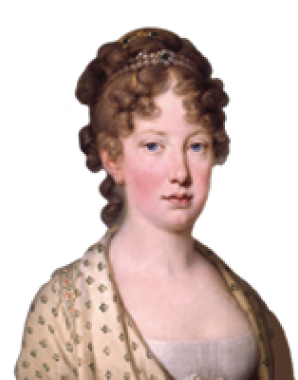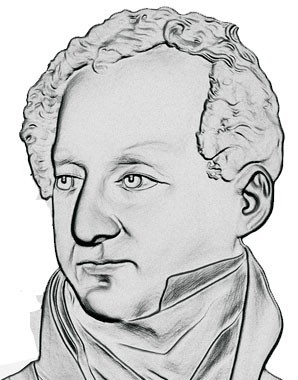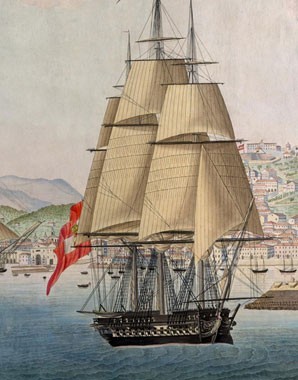The Empress of Brazil
While marrying by proxy may not exactly have made for a romantic dream wedding, it was far from unusual for female members of ruling dynasties.
‘A big decision! But it has been made ...,’ wrote Archduchess Leopoldine in a letter to her sister. At this point in time, Emperor Franz’s daughter could not have any idea of how her marriage to the Portuguese crown prince Dom Pedro would turn out. The magnificent ‘Brazilian marriage’ between Leopoldine and Dom Pedro took place at Metternich’s instigation in the Augustinian church in Vienna in 1817 and led to a Habsburg archduchess becoming Empress of Brazil. However, the Portuguese prince was not even present in person, but was represented by the victor of Aspern Archduke Karl. Weddings by proxy (‘per procurationem’) were a thoroughly common procedure in dynastic unions undertaken for political ends.
After three months on board ship, Leopoldine finally reached her husband in Rio de Janeiro, where the Portuguese court, having taken refuge there some years before in the wake of the French occupation of Lisbon, now ruled over the ‘United Kingdom of Portugal, Brazil and the Algarve’. ‘Brazil has a wonderfully gentle climate, is a land richly blessed and has honest and good-natured inhabitants,’ wrote Leopoldine to her sister. She also seems initially to have been enthusiastic about her husband: ‘The portrait of the prince still sends me half-crazy ... He is as handsome as Adonis.’
On 7 September 1822, Dom Pedro declared Brazil to be independent of Portugal and on 1 December had himself crowned Emperor. Leopoldine, who regularly intervened in her husband’s political decisions, had urged him in a letter – he was on a journey – to take this step: ‘ Brazil is like a volcano ... With or without your help, it will secede. The apple is ripe, pluck it now or it will go bad ... Pedro, this moment is the most important of your whole life ... You will have the support of the whole of Brazil.’
The Habsburg link with Brazil led to numerous Austrian natural historians and artists visiting the country, which even saw the establishment of Austrian settlements. However, Leopoldine’s marriage did not turn out to be happy one, with Pedro constantly preferring affairs to his wife’s company. He made a middle-class woman his mistress and ‘first lady-in-waiting to the Empress’, raising her with their illegitimate daughter to the ranks of the higher nobility. Having probably suffered physical abuse at her husband’s hands, Leopoldine died in 1826, ten days after a miscarriage.



















